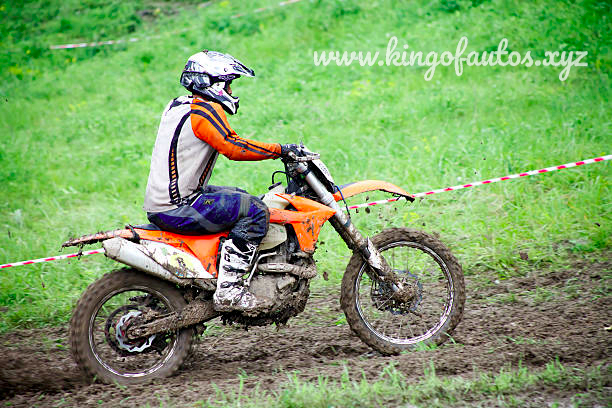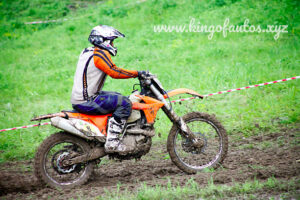THE HISTORY OF KTM MOTORCYCLE COMPANY
There are three significant bike producing focal points on the planet. In America, Wisconsin’s Harley-Davidson is the top maker. In Asia, it’s India’s Hero MotoCorp, which additionally is the world’s biggest bike maker. In Europe, Austria’s KTM AG rules as Europe’s #1 biggest cruiser brand. In 2016, KTM AG had sold a greater number of cruisers than even such marques as BMW, Aprilia, and Ducati. KTM AG is likewise the creator of the X-Bow hypercar, which appeared at the Geneva Motor Show in 2008 and is still right now underway today.
EARLY DAYS
The narrative of KTM starts in 1934, some time before the possibility of superior execution hustling bicycles and supercars were even conceptualized. Austrian designer Hans Trunkenpolz opened a vehicle mechanics shop in Mattighofen. After three years, Trunkenpolz’s shop was selling DKW bikes and the next year, had added Opel autos to his organization’s contributions. The shop came to be known as Kraftfahrzeug Trunkenpolz Mattighofen: Kraftfahrzeug, the German word for engine vehicle, Trunkenpolz, named after its organizer Hans Trunkenpolz; and Mattighofen, the area of the shop. This was the start of the KTM brand name.
During World War II, KTM supported itself through diesel motor fix occupations and Trunkenpolz’s significant other dealt with the business. The finish of World War II saw a practically quick decrease in motor fix occupations which prompted Trunkenpolz thinking about the creation and creation of his own special bike. Not at all like BMW, which was a significant provider to the Third Reich, KTM was not burdened by a similar post-war producing limitations that were given over to other previous Axis organizations by the recently shaped United Nations. Trunkenpolz prototyped his most memorable bike in 1951 called the R100. The R100 utilized all custom in-house parts, with the exception of the Rotax motors obtained by Fitchel and Sachs. Creation of the R100 started in 1953 with a group of just 20 workers (counting Johann Trunkenpolz, himself). The group had the option to create 3 complete cruisers each day. That very year, Trunkenpolz joined forces with finance manager Ernst Kronreif who turned into a significant financial backer and investor of KTM. The organization was then renamed Kronreif and Trunkenpolz Mattighofen. The accompanying two years delivered the presentation of three new items, the R125 Tourist in 1954 and the Grand Tourist and Mirabell bike in 1955.
AN INTRODUCTION TO RACING AND NEW MODELS
KTM made their authority dashing presentation in 1954 and got their most memorable title in the Austrian 125cc public title of that year. They showed up at the 1956 International Six Days Trials, the world’s most established rough terrain bike occasion endorsed by the FIM, and brought back home a gold decoration with Egon Dornauer riding a KTM cruiser to triumph. KTM assembled their absolute originally devoted sport bicycle in 1957, the Trophy 125cc. The name, most likely, was regarding their success at the Austrian 125cc public title only 3 years sooner. KTM totally finished the presentation of their most memorable sulked — the Mecky — in 1957, the Ponny I in 1960 and Ponny II in 1962, and the Comet which was new for 1963. The Mecky and Ponny I and II became handy dandy metropolitan vehicle while the Comet proceeded to be another #1 for rough terrain racers. KTM won their absolute first FIM Motocross GP title in 1974 with Russian motocross racer Guennady Moisseev winning the 250cc class on a KTM 250. This success would be the first of more than 260 big showdowns asserted by KTM all through the following 40 years.
COMPANY GROWTH… AND SUBSEQUENT FALL
By 1971, KTM had developed their labor force to 400 workers and offered 42 unique models in their item setup. KTM was likewise delivering race-just bikes for the cruiser hustling industry. During the 1970s and into the 1980s, KTM began producing radiators for a few European automakers. The radiator business alone added to a significant piece of KTM’s pay all through the ’80s. In 1978, KTM established their US auxiliary, KTM North America, situated in Lorain, Ohio. Back home in Austria, KTM was rebranded as KTM Motor-Fahrzeugbau KG in 1980 and in 1981, the organization developed to 700 workers. Pay was at $750 million out of 1981 and global business represented 76% of that cash.
While business was great for the previous little vehicle shop from Austria, Japanese makers like Honda, Yamaha, Suzuki, and Kawasaki had entered the worldwide bike market and were fanning out like quickly during the 1980s. It didn’t take long for the Asian Invasion to bring down the previous 2-wheel goliaths and become the new predominant power in bike assembling and deals. The nearly mind-blowing phenomenon of the Japanese cruiser brands choked out KTM’s bike and sulked deals which prompted a creation break in 1988. With the demise of then-CEO Erich Trunkenpolz (child of Hans Trunkenpolz, who had passed in 1962) and a 51% takeover led by Austrian legislator Josef Taus in 1989, the fate of KTM was in danger. Taus battled to transform KTM around back into productivity and by 1991, control of KTM was parted across various loan boss banks.
A NEW LEASE ON LIFE
The 1994 Duke sport bicycle introduced another time of execution at KTM.
The item portfolio which KTM had developed during the ’70s and ’80s was parted into four separate elements in 1992: bikes were presently delivered by KTM Fahrrad GmbH, car radiators were worked by KTM Kühler GmbH, tooling producing was alloted to KTM Werkzeugbau GmbH, and the cruiser division, the center of KTM’s earliest victories, was currently called KTM Sportmotorcycle Gmbh.
KTM Sportmotorcycle GmbH began slow, however was productively expanding their creation and turnover before long. Under new proprietorship by KTM Motorradholding GmbH (a joint endeavor between Cross Holding and different financial backers), KTM Sportmotorcycle acquired its balance and had the option to ingest the tooling division, KTM Werkzeugbau GmbH. KTM Sportmotorcycle put more into creation and pristine R&D offices, which prompted the result of new advancements and more items. The organization, by and by, continued their motorsports advantages and went about as both support and rival in a huge number of formally endorsed bike dashing occasions. The Duke sport cruiser was presented in 1994, which turned into the organization’s generally well known standard model. In 1996, KTM appeared their now signature orange variety uniform and in 1997, the fluid cooled four-chamber Supermoto and Adventure superior execution bicycles showed up.
In 1995, KTM bought Sweden’s Husaberg AB and in 2013, procured another Swedish contender, Husqvarna. By 2015, KTM had developed to turn into Europe’s biggest cruiser maker. Pay for that year added up to 1 billion Euro ($1,128,149,000 USD) and KTM had the option to consolidate three of the four divisions that were presented after the split in 1992.
RACING POWERHOUSE
KTM as of now holds 96 MXGP, MX1, and MX2 big showdowns starting around 1974 and 114 E1, E2, E3, and Super Enduro world titles starting in 1990. The organization has guaranteed 260 big showdown titles and has 3 continuous titles in AMA Supercross somewhere in the range of 2015 and 2017. KTM made their Dakar Rally debut in 1994 and guaranteed positions second through twelfth in 1998’s occasion. Somewhere in the range of 2001 and 2018, no other producer has had such an extremely tight grip over the World’s Deadliest Rally Race as KTM. Other crosscountry rally occasions attempted by KTM incorporate the Atlas Rally and the Rallye du Maroc. KTM has 37 world titles in crosscountry rally races and are 15-time victors of the FIM Cross-Country Rallies World Championship.
Achievement has come to KTM on asphalt as well as rough terrain. In 2003, KTM engaged in street dashing; explicitly in the 125cc and 250cc classes. KTM won the 2005 Grand Prix constructor’s title and the Moto3 producer’s title in 2012, trailed by maker’s titles in 2014 and 2016, alongside the Moto3 class world title in that very year. KTM likewise handles sections in the MotoGP and Moto2 classes and has been a functioning rival in the Superbike International German Championships somewhere in the range of 2009 and 2011.
In 2008, KTM entered the universe of hypercars with the X-Bow. The X-Bow is a mid/back motor, back tire drive super lightweight games vehicle intended for road and circuit use (besides in North America, where it must be bought as a track-just race vehicle). Carbon fiber development permits the X-Bow to gauge a shade north of 1,700 lbs., a negligible part of the check weight of the ordinary traveler vehicle. The ongoing emphasis utilizes an Audi-obtained turbocharged 2.5 liter motor that makes somewhere in the range of 295 and 346 strength (contingent upon tune) and sends it to the back tires VIA a standard 6-speed manual transmission or an exhibition 6-speed successive manual transmission with a course reared double grip programmed gearbox to be accessible later on. Maximum velocity is 150 MPH and 0-60 midpoints at 3.3 seconds. On the expert hustling circuit, the X-Bow won the supersports class of the 2009 British GT Championship, the GT4 class in the 2011 season, and a 2016 GTS title in the USAC-endorsed GT World Challenge series.
RANGE OF PERFORMANCE
KTM has some expertise in superior execution cruisers for road, rough terrain, and circuit use. Their rough terrain bike arrangement is parted into four classifications: Motocross, Cross-Country, Enduro, and Free Ride. Motocross bicycles incorporate the 105, 126, 150, and 250cc SX series (50, 65, and 85 are youth bicycles), and the KTM SX-F. The Cross-Country XC bicycles incorporates 150, 250 and 300 cc two-stroke models and 250, 350 and 450 cc four-stroke models. The Endure EXC line is involved 250, 350, 450, and 510cc four-stroke bikes and the Endure R with a 690 cc motor. The Free Ride series incorporates the Freeride 250R and the all-electric Freeride E-SX, E-XC, and the road rendition E-SM which are accessible for the European market.
KTM’s road bicycle line follows its genealogy back to the first 1994 Duke 620. These bicycles are alloted to six classifications: Supermoto (690 SMC R, 625 SMC, and 560 SMR), Adventure Tourers (1090 Adventure and 2190 Super Adventure), Sports Tourer (1290 Superduke GT), Naked Bikes (stripped down, standard adaptations of the Duke and Superduke), Supersport (RC 390 and RC16 race bicycle), and the as of late ceased Superbike which comprised of the 1190 RC8 homologated road/hustling cruiser.
Whether you race on soil or on black-top, get air or tear through clasp turns, Race Driven is the bike and ATV devotee’s #1 stop for execution and secondary selling parts. Look at our KTM cruiser classification and find the best arrangements on cruiser brake cushions, brake rotors, motocross chains and sprockets, and different parts for KTM soil bicycles, KTM sport bicycles and bikes.

